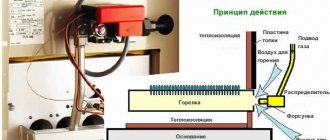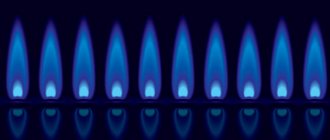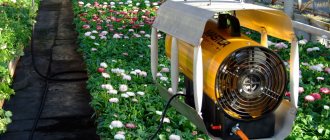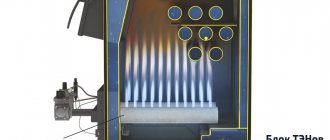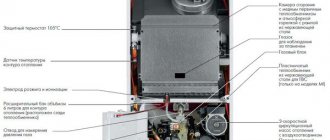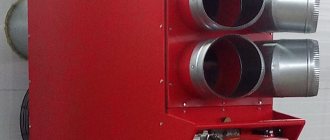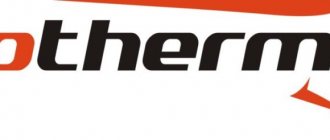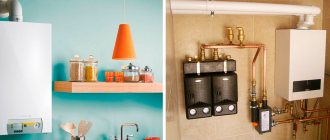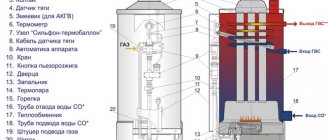Main types of devices
It seems that the principle of construction of such heaters is the same, and is also based on a burning flame that warms the air. At the same time, warm air fills the room and provides the required temperature. But it's not that simple. The operation of many modern equipment is based on the use of newer technologies for the generation and movement of heat when creating. So both the instructions and operating features of different types of gas heaters can differ greatly from each other.
All gas heaters can also be divided into several groups:
- warm gas guns (strong heat fans);
- infrared outdoor heaters;
- catalytic gas devices;
- ceramic gas products;
- gas convectors for stationary use;
- Convenient portable gas devices.
Despite the rather distinctive principle of device design and operation, all equipment of this format is characterized by approximately the same set of advantages and disadvantages.
The advantages of the device include:
- Network or liquefied natural gas is considered more affordable in price than all other energy carriers. This type of heating will not require the user to spend money on operational repairs. Some types of designs include a connection to the power supply, for example, to ensure full operation of fans and the functioning of the main control units. Energy consumption in such devices is minimal, so it does not affect the family budget in any way.
- The design of many gas heaters is quite simple and does not have any complex components. This helps to increase the reliability and safety of using such equipment.
- Modern models of heaters have a high efficiency, that is, this indicates their efficiency and economy. Some models of heaters are distinguished by a high level of mobility - they are very small, easily moved from one place to another and transported by transport. Some types of devices can even be taken with you outdoors, on a hike, or fishing.
- The operation of such devices causes almost no harm to the ecological system - the products of complete combustion of gas are considered harmless.
- These devices are usually easy to use.
- Warming up of the room takes place in a short period of time - the devices are not inert in operation. Gas heaters respond very quickly to changes in their settings.
- More modern models in this class include a multi-level protection system that helps protect a person and minimize the possibility of a threat developing.
- Many devices are distinguished by high performance capabilities - they can work efficiently for more than ten years.
Of course, like all devices, such heating devices also have their drawbacks. These include:
- In any gas heater for a summer residence, the fire hazard cannot be completely eliminated, since in this case highly flammable fuels are used, and their operation occurs with high-temperature heating. Such devices require special care and compliance with all safety rules. You cannot leave them unattended if there are small children in the family.
- Unburnt natural gas is considered quite toxic, so even a minimal leak can result in severe poisoning. It is this fact that imposes additional requirements for careful use.
- Gas combustion must occur with a regular supply of oxygen; in many devices it is taken directly from the room itself where the heater is located. This means that you also need to take into account the supply and exhaust ventilation system so that the room does not have a heavy and uncomfortable atmosphere for humans, which in some cases can even be harmful to health. And also the requirements for creating ventilation refer to additional air circulation if there is also a gas stove in the room. If with water or electric heating such indicators are sometimes not paid any attention, then in the case of using gas heaters, a neglectful approach to the ventilation system is extremely dangerous.
However, when used correctly, such devices become good and safe assistants that help quickly increase the temperature in a cold room and ensure a comfortable stay at the dacha.
Gas burner - the heart of heating equipment
Heating a house with gas is quite profitable, since it (gas) has significant advantages over coal or wood. But in order for the heating system to be effective, it is necessary to correctly organize the procedure for combustion of fuel in the boiler. And modern burner models provide boilers with an almost perfectly accurate mixture of air and fuel, in which the gas is burned entirely.
Quite often, especially when old areas are being gasified, many people wonder which burner is best for their boiler, how to choose it correctly for an appliance that is intended exclusively for solid fuel. But most of the modern models are of very high quality, thanks to which you can not only maintain the optimal temperature, but also regulate the flame power.
Note! Roughly speaking, a gas burner is a device in which oxygen is mixed with gas, after which the resulting mixture is burned and a stable torch is formed. It is characterized by a simple design, works flawlessly, and the startup procedure takes just a few seconds.
What is typical is that recently burners have been used not only in individual heating devices, but also in production. And this is explained not so much by the excellent properties of gas, but by its cheapness.
Video - How a gas burner works
Basic requirements for gas burners
Gas burners for boilers should, first of all, be durable and easy to install; during operation, they should not make more noise than required by sanitary and hygienic standards, and if it is possible to operate on several types of fuel, then they should also be able to quickly switch from one to another . Moreover, modern trends require that when the burner operates, only low-toxic smoky gases are released, although, in principle, this applies to all types of fuel. What is low toxicity? It's simple - it's low in carbon monoxide and nitrogen oxide.
All the requirements mentioned above depend mainly on the way in which the oxygen is mixed with the gas. And so we gradually approach the classification of burners according to the mixing method. Let's look at this in more detail.
Thermal gas guns
In appearance, such devices may vaguely resemble an artillery gun - a large metal cylinder, which is located on a special stand.
Such a heater is considered the simplest in its structure. The principle of operation is quite simple - inside the cylinder itself there is a gas burner, and behind it there is an electric fan, which creates a special directed flow of air heated by the flame. The electrical part of the gas gun can operate from the mains or a special battery. Most often, such devices are connected to a cylinder filled with liquefied gas (propane).
The advantage of such a device can be considered cost-effectiveness and simplicity of design. They are quite mobile - they can be easily moved to another place; for this, the device is equipped with special handles on the cylindrical casing.
Such heaters often have a piezo ignition system built into them. There are also special protection levels that help ensure high safety . Special installed sensors closely monitor the possible source of fire, the overall temperature of the device body, and the amount of oxygen in the room. In the event of an emergency, the device will turn off on its own and cut off the gas supply to the burner.
But such a device also has many negative features. First of all, it should be noted that it is quite large in size for a living space. Direct combustion of gas will require a large amount of air supplied to the room, and the combustion products as a result give a rather unpleasant odor. An open flame in a heater is a significant safety hazard.
Another significant drawback in the operation of such a device is the rather high noise level. It can reach up to seventy decibels, which is too much for a normal environment in the house.
It should be noted that such devices are usually not used in residential premises. And for workshops at work, in garages, on construction sites or in greenhouses - this option is quite suitable. Due to the directed hot air flow, heating of even a large room will occur quickly.
